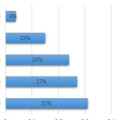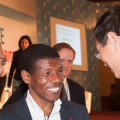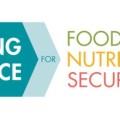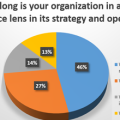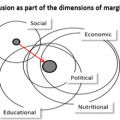In the second of a three-part series of posts for the Swedish International Agricultural Network Initiative (SIANI), Melinda Fones-Sundell shares her experience of the second day of the 2020 Conference noting the emphasis on evidence, links between human health and economic development, and the importance of women’s empowerment as an entry point to build resilience.
Highlights from Conference Brief 11: Gender, Shocks, and Resilience
Households in developing countries rely on a variety of strategies to cope with shocks. While the importance of social safety nets in protecting impoverished households is widely accepted, the role of gender, in underlying vulnerabilities and response to shocks, remains largely ignored. In their 2020 Conference Brief Gender, Shocks, and Resilience, IFPRI’s Neha Kumar and >> Read more
Knowledge Fair Participant Poll: Day 3 Results
1. If you had $1 million to allocate to only one resilience capacity-building activity, which of these would you try to improve? 2. In your opinion, will the world be more resilient to shocks by the year 2020?
Day Three in Photos
The way forward for building resilience for ending hunger and malnutrition
Resilience is much more than the latest buzzword in development. It has real and practical meaning and application in our work, and will play a key role in bridging the divide between short-term relief and long-term development goals. In his closing remarks IFPRI Director General Shenggen Fan shared lessons learned from the conference and >> Read more
Highlights from Conference Brief 2: Enhancing resilience for food security in refugee-hosting communities
In 2012, the world was home to about 28 million people who had fled their home region or country, and most of these people were hosted in developing countries. These refugees and internally displaced people (IDPs) have tended to be the focus of publicity and relief efforts—but what happens to the resilience and food security >> Read more
Day Two in Photos
Highlights from Conference Brief 9: Pastoralism and Resilience South of the Sahara
Pastoralists in the Horn of Africa face five big challenges to their resilience: They are losing land to farmers, irrigation, tourism, and land investments by outside investors. Conflict and violence have disrupted livelihoods and markets and increased vulnerability during drought. Population growth has put heavy pressure on land resources. Among pastoralists, there are large differences >> Read more
Knowledge Fair Participant Poll: Day 2 Results
1. Is resilience a useful concept or just a buzzword in development? (Yes= resilience is useful concept; No= resilience is buzzword) 2. How far along is your organization in adopting a resilience lens in its strategy and operation?
Highlights from Conference Brief 15- “Resilience and Exclusion: Development Policy Implications”
A new conference brief by Joachim von Braun and Sukhadeo Thorat makes the case that overcoming exclusion is a complex political agenda with legal, cultural, social, economic, technological, and governance dimensions. Exclusion is a global phenomenon, not just one of developing countries, the authors note, and is fundamentally a human rights issue. Exclusion quite often erodes the resilience capacity of social groups. It brings about unequal access to public services, making excluded people’s efforts to overcome shocks more difficult than those of their counterparts from nonexcluded groups. Moreover, resilience and exclusion are in a vicious dynamic relationship over time. Typically, social exclusion perpetuates the effects of shocks and thereby undermines resilience. The socially excluded groups may collapse or converge to a worse-off steady state after disruptions, taking a protracted time to recover from shocks.
- « Previous Page
- 1
- 2
- 3
- 4
- 5
- …
- 7
- Next Page »

